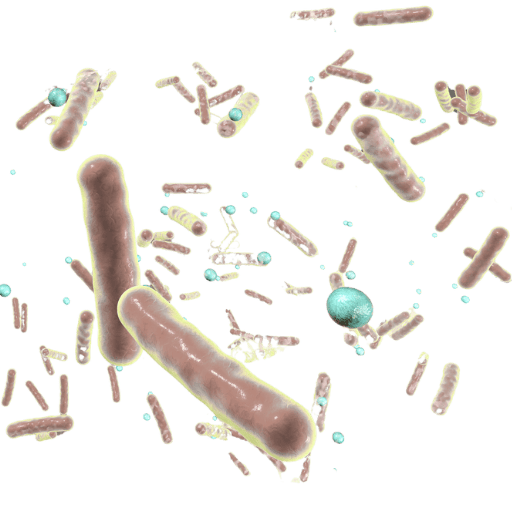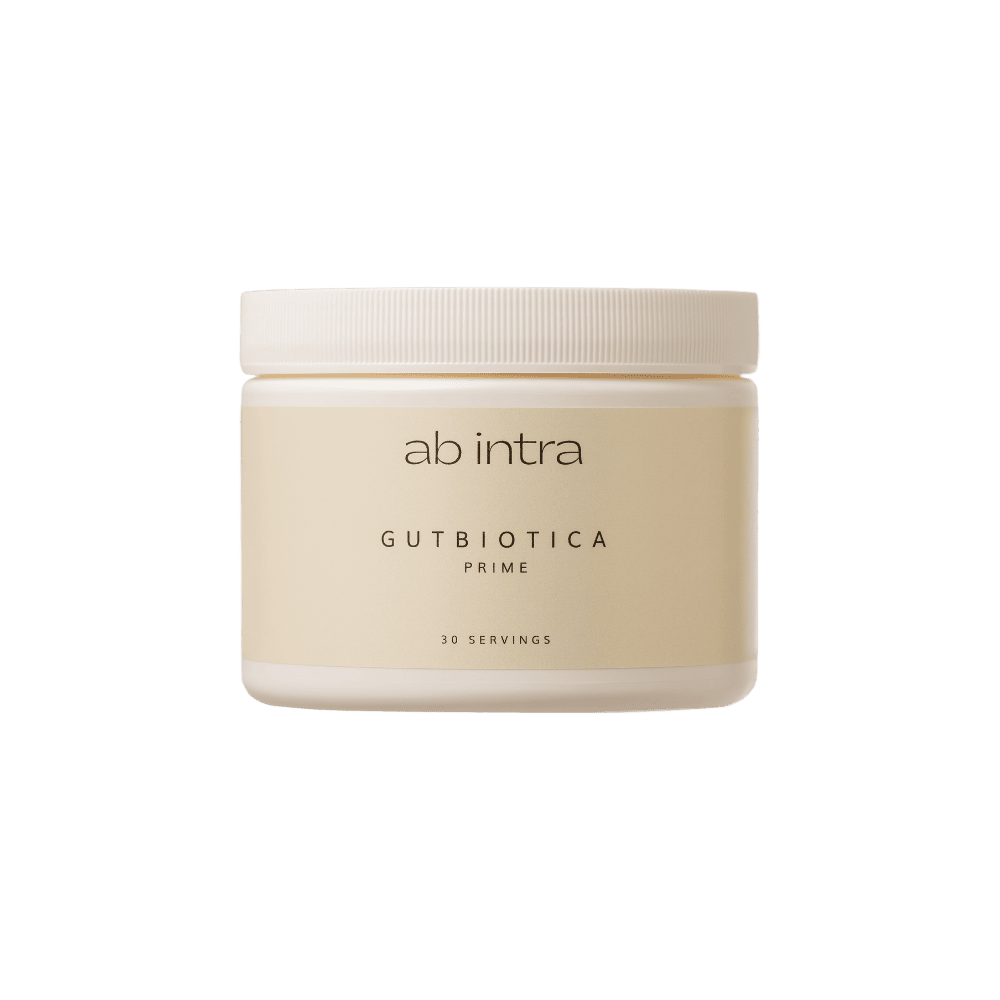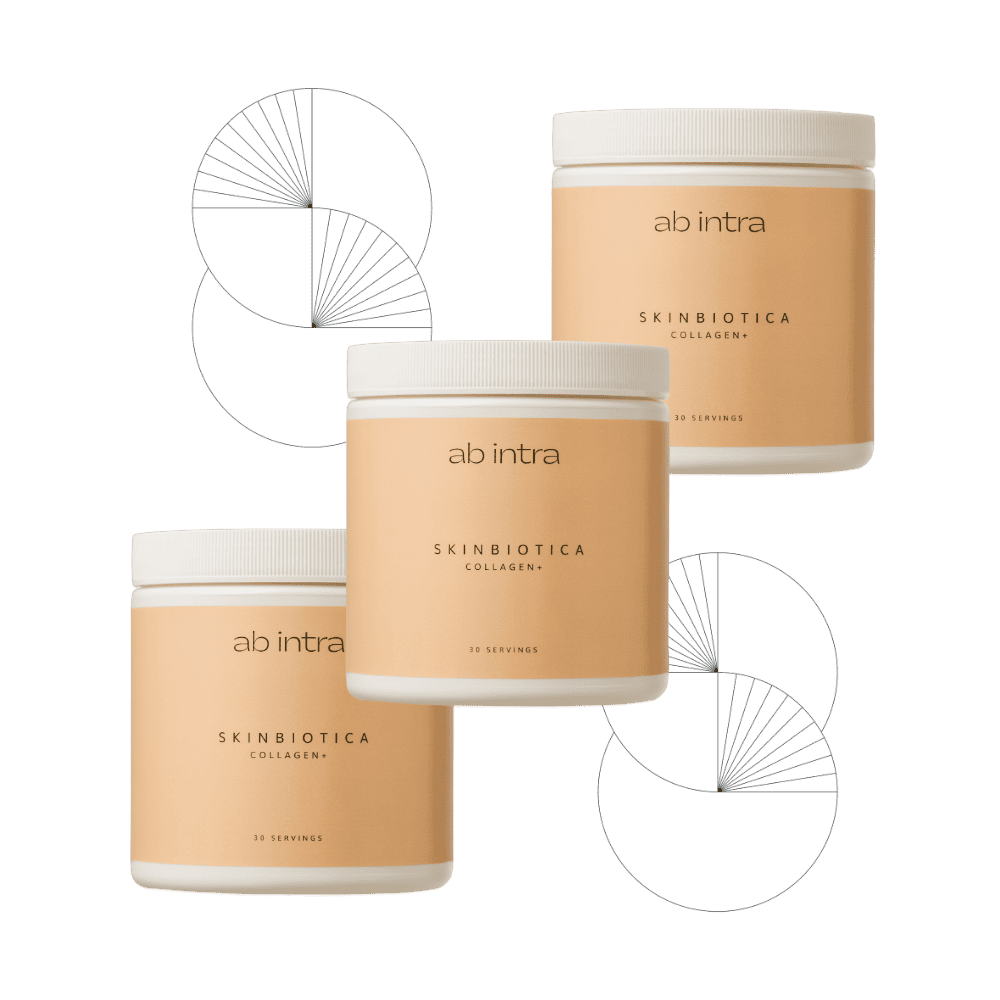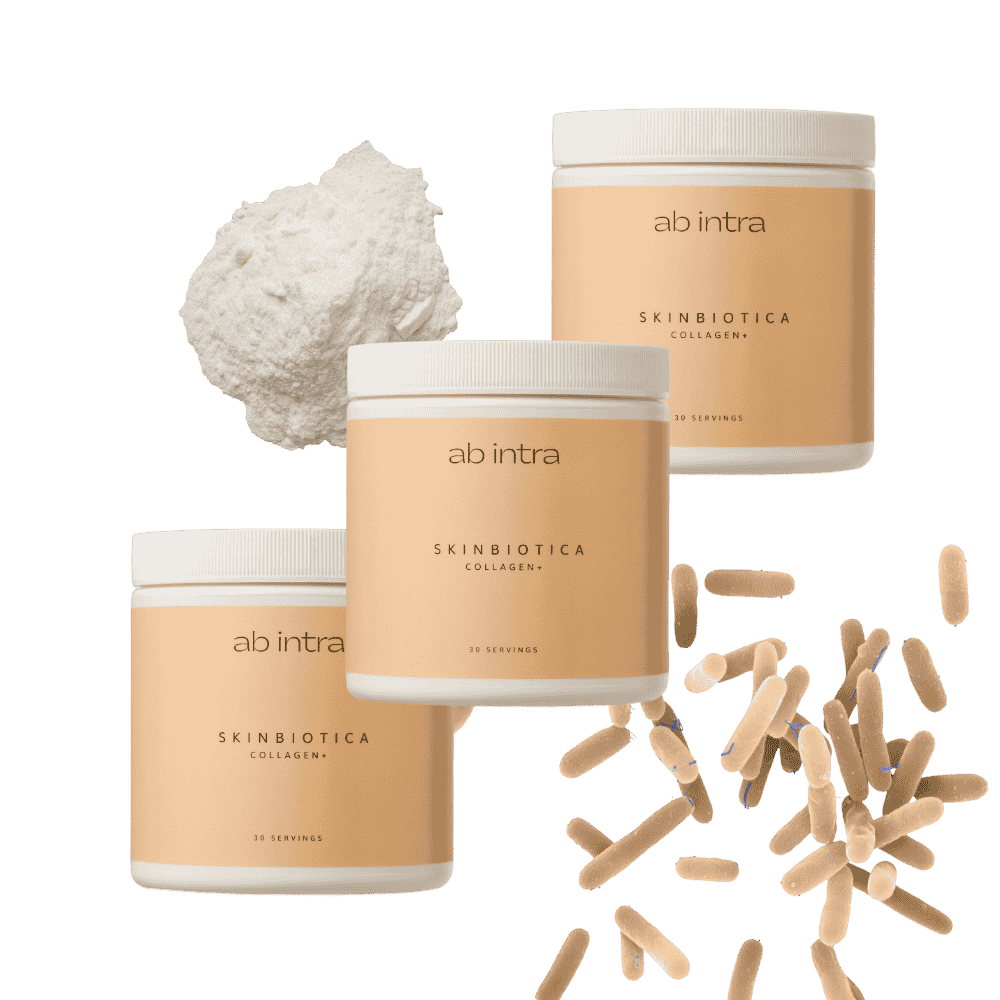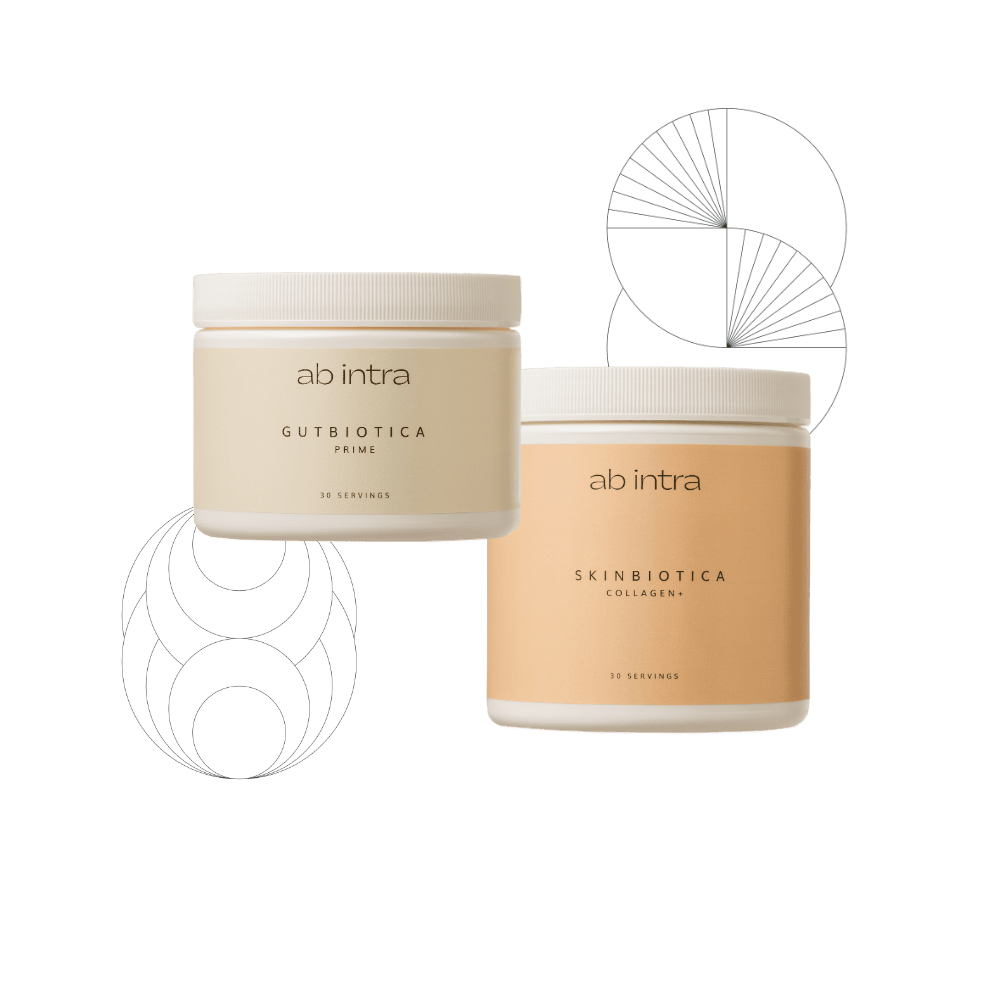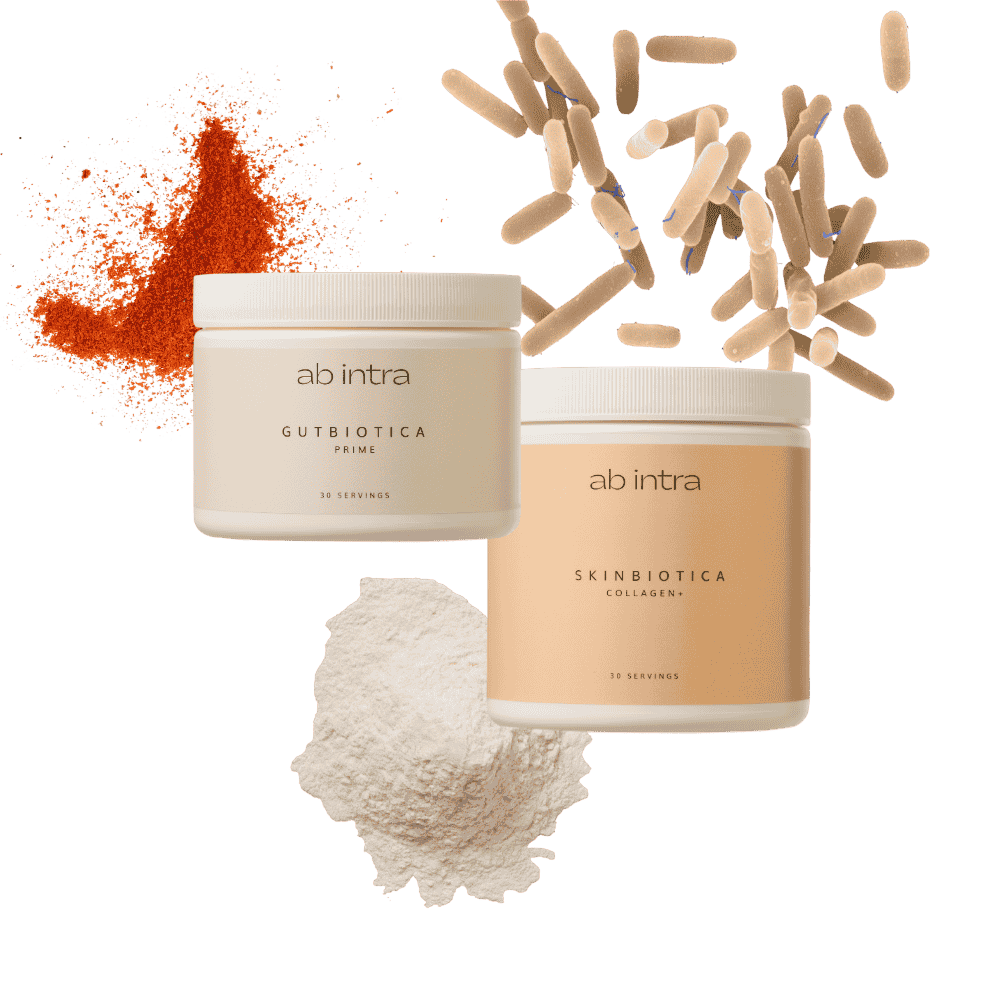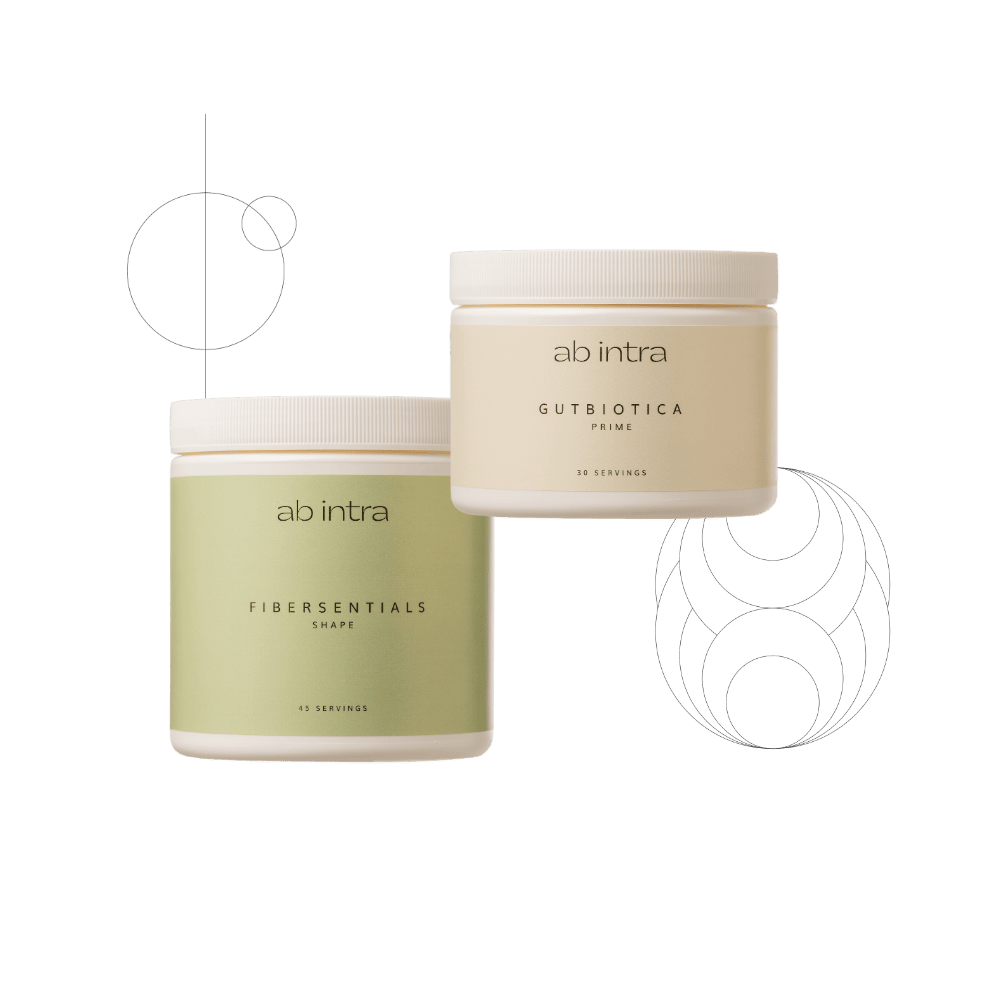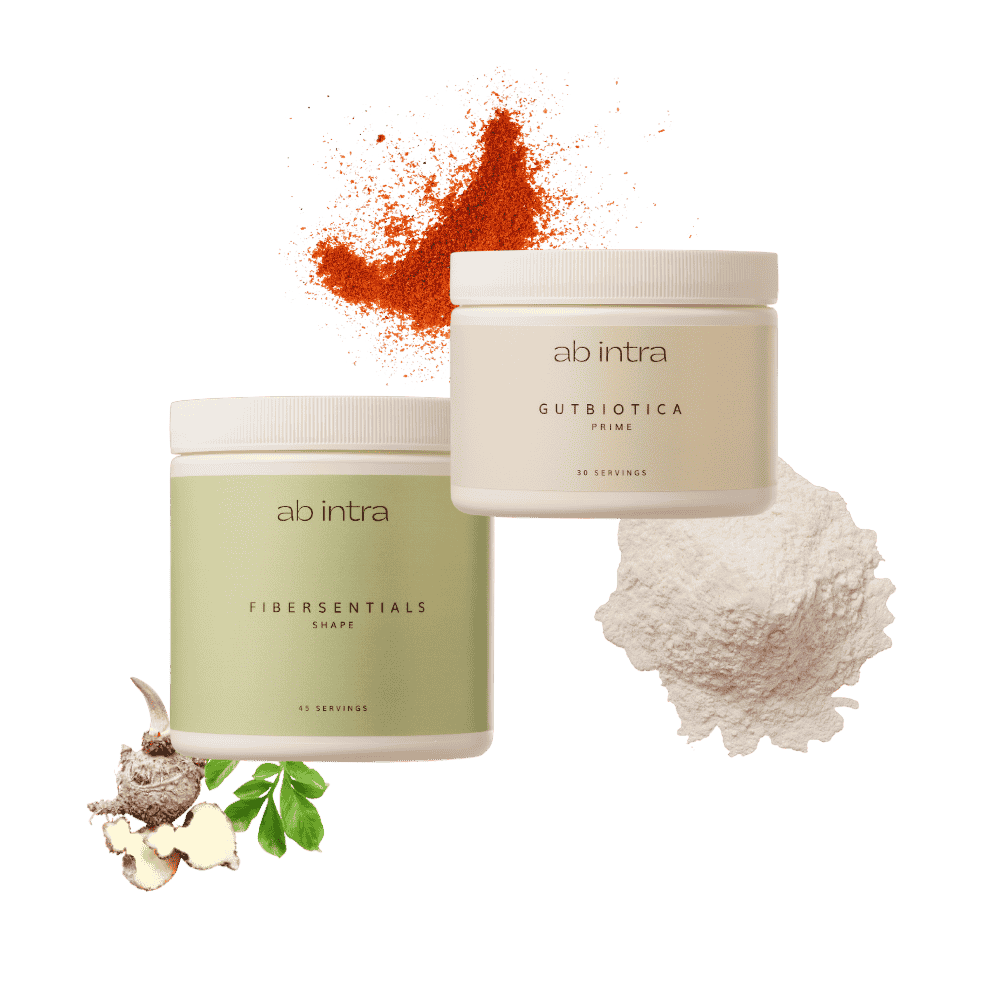We are not alone. From the moment we are born, trillions of microorganisms, mostly bacteria, but also viruses, fungi, and protozoa, take up residence in our bodies. Far from being mere passengers, they are partners in health, co-evolving with us over millennia. Together, we form an ecosystem designed not just to survive, but to thrive.
The Gut as Your Inner Forest
Deep within, the gut microbiome is home to diverse microbial lineages: Firmicutes, Bacteroidetes, Actinobacteria, Proteobacteria, and more. Like trees, shrubs, and undergrowth in a forest, these groups create a balanced system where no single species dominates unchecked.
Diversity here means resilience. Research shows that reduced microbial diversity is often linked to disease, while a species-rich ecosystem can better resist disruption. When one species falters, others with overlapping functions can step in. This functional redundancy is a hallmark of a healthy gut [1].
Why do we need this resilient inner forest? Because evolution taught us to outsource. Unlike the ~23,000 genes in the human genome, our microbial partners contribute more than 3 million genes, producing thousands of metabolites essential to human life [2]. This “second genome” doesn’t just complement us — it completes us.
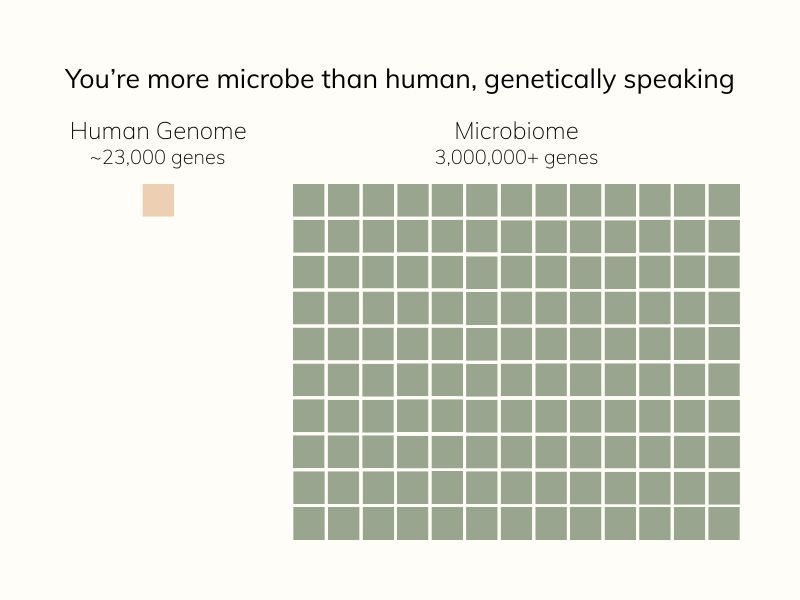
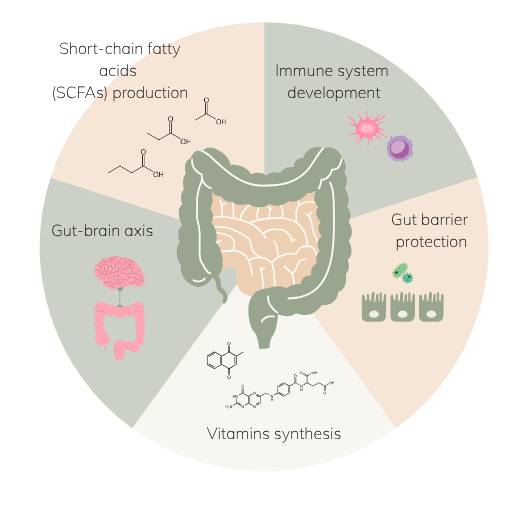
Your gut microbiome is a multi-tasking powerhouse. From digesting fiber and training your immune system to producing essential vitamins and influencing mood—these microscopic allies help support your health from the inside out.
Why Your Gut Matters for Whole-Body Health
The microbiome’s influence reaches far beyond digestion. It shapes metabolic, immune, and even neurobehavioral traits. Among its many roles, our gut microbes:
- Fuel and regulate: Ferment fiber into short-chain fatty acids (SCFAs) like butyrate, propionate, and acetate, which nourish gut cells, reduce inflammation, and influence energy and glucose metabolism [3,4].
- Train immunity: With roughly 70-80% of your immune system based in the gut, microbes help guide immune cell development and keep responses balanced, not overactive [5,6].
- Protects barrier: A healthy microbiome reinforces the gut lining [7]. Butyrate, for example, promotes tight-junction assembly and mucin synthesis, fortifying your defense against harmful invaders [8]. This internal barrier strength can echo outward, supporting the skin’s own protective barrier by reducing systemic inflammation.
- Make vitamins: Contribute to essential nutrients we cannot produce ourselves, including vitamin B12, folate, vitamin K, and several B vitamins [9,10,11].
- Mood and brain support: Your gut and brain are in constant dialogue via the gut-brain axis. Some microbes produce neurotransmitters like serotonin and GABA that influence mood, focus, and emotional well-being [12].
- Defend against invaders: Compete with pathogens to protect against infection.
In short, a healthy gut underpins health everywhere.
The Fiber Gap We Can’t Ignore
But this balance is fragile. Modern lifestyles, from ultra-processed diets to chronic stress, sedentary behavior, frequent medication, and antibiotic use, all place strain on the microbiome [13]. Here, we focus on diet, because it is one of the most direct and modifiable factors shaping the gut ecosystem.
Yet most of us fall short of the fiber our microbes rely on. Global guidelines recommend around 30 grams per day, but average intake often lingers at half that [14-17]. Ultra-processed foods have crowded out the fiber-rich plants once abundant in traditional diets.
The consequences ripple through the microbiome: loss of species that depend on these substrates, and a reduction in fermentation products and other metabolites that support immune and physiological functions [18]. Put simply, when we shift to diets far removed from those under which our microbiome co-evolved, we disrupt a symbiosis that once benefited both host and microbes [19].
Supporting your gut begins with bridging this gap, choosing a wide variety of plant foods, becoming familiar with the fiber content of what you eat, and being mindful of hidden shortfalls. For many, supplementation can provide an accessible way to fill in the missing pieces.
Ancestral diets delivered ~100 g/day of fiber, far above today’s averages and even current recommendations.
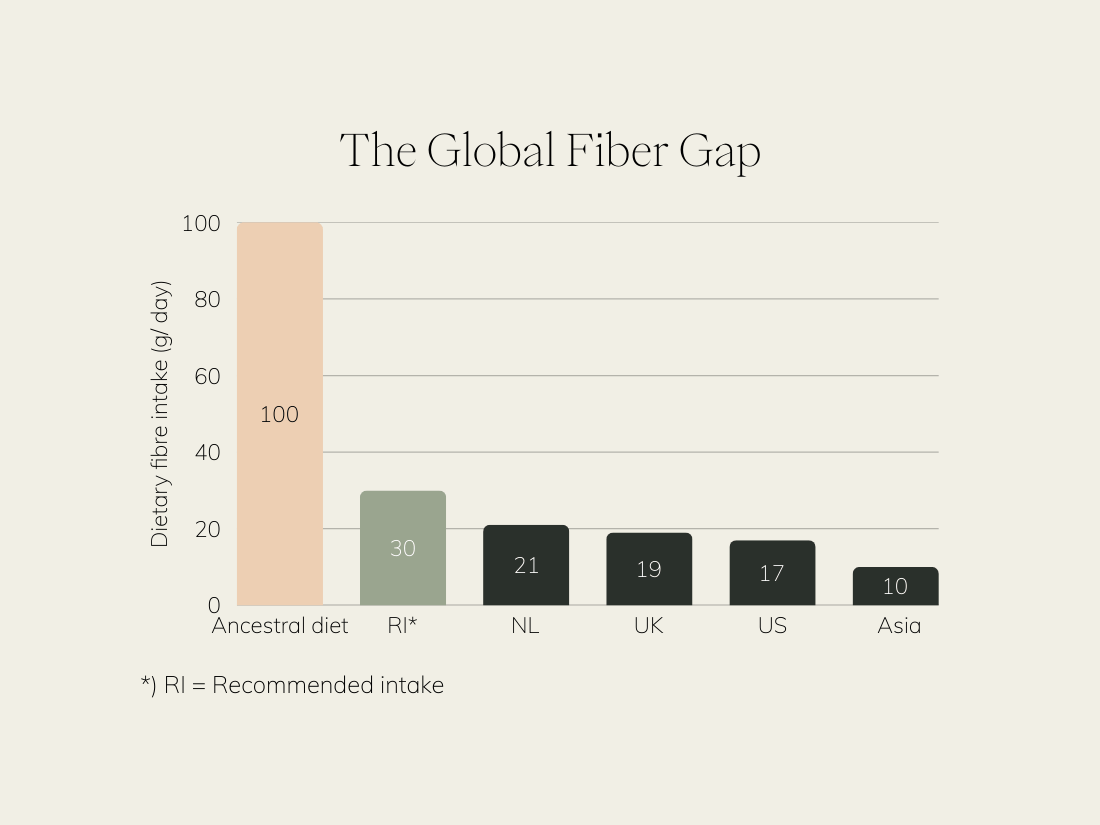

Born to Thrive Together
At its heart, supporting your gut is not just about nutrients or microbes in isolation, but about honoring a relationship. Our biology was never meant to stand apart from the microbial world. Every fiber we eat, every SCFA they produce, every layer of protection and repair in our body reflects a story of co-existence.
At AB INTRA, our products reflect this same principle of co-existence:
Gutbiotica lays the foundation, with strains and nutrients designed to restore microbial balance at the core.
Skinbiotica extends that balance outward, where microbial signals and collagen support meet the skin’s own renewal.
Fibersentials provides the daily nourishment microbes need, bridging the gap when diet alone falls short.
When we support our gut, we nurture the partnership that has carried us through evolution. It is an act of remembering: that we are ecosystems, not individuals, and that health begins from within.
References
- F. Sommer, J. M. Anderson, R. Bharti, J. Raes, and P. Rosenstiel, “The resilience of the intestinal microbiota influences health and disease,” Nat. Rev. Microbiol., vol. 15, no. 10, pp. 630–638, 2017, doi: 10.1038/nrmicro.2017.58.
- A. M. Valdes, J. Walter, E. Segal, and T. D. Spector, “Role of the gut microbiota in nutrition and health,” BMJ, vol. 361, p. k2179, Jun. 2018, doi: 10.1136/bmj.k2179.
- P. D. Cani and B. F. Jordan, “Gut microbiota-mediated inflammation in obesity: a link with gastrointestinal cancer,” Nat. Rev. Gastroenterol. Hepatol., vol. 15, no. 11, pp. 671–682, 2018, doi: 10.1038/s41575-018-0025-6.
- E. S. Chambers, T. Preston, G. Frost, and D. J. Morrison, “Role of Gut Microbiota-Generated Short-Chain Fatty Acids in Metabolic and Cardiovascular Health,” Curr. Nutr. Rep., vol. 7, no. 4, pp. 198–206, 2018, doi: 10.1007/s13668-018-0248-8.
- D. Zheng, T. Liwinski, and E. Elinav, “Interaction between microbiota and immunity in health and disease,” Cell Res., vol. 30, no. 6, pp. 492–506, 2020, doi: 10.1038/s41422-020-0332-7.
- S. A. Scott, J. Fu, and P. V Chang, “Microbial tryptophan metabolites regulate gut barrier function via the aryl hydrocarbon receptor,” Proc. Natl. Acad. Sci., vol. 117, no. 32, pp. 19376–19387, Aug. 2020, doi: 10.1073/pnas.2000047117.
- M. Régnier, M. Van Hul, C. Knauf, and P. D. Cani, “Gut microbiome, endocrine control of gut barrier function and metabolic diseases,” J. Endocrinol., vol. 248, no. 2, pp. R67–R82, 2021, doi: 10.1530/JOE-20-0473.
- D. J. Morrison and T. Preston, “Formation of short chain fatty acids by the gut microbiota and their impact on human metabolism,” Gut Microbes, vol. 7, no. 3, pp. 189–200, May 2016, doi: 10.1080/19490976.2015.1134082.
- J. G. LeBlanc, C. Milani, G. S. de Giori, F. Sesma, D. van Sinderen, and M. Ventura, “Bacteria as vitamin suppliers to their host: a gut microbiota perspective,” Curr. Opin. Biotechnol., vol. 24, no. 2, pp. 160–168, 2013, doi: https://doi.org/10.1016/j.copbio.2012.08.005.
- P. Anna, C. Lisa, A. Alberto, Z. Simona, M. Diego, and R. Maddalena, “Folate Production by Bifidobacteria as a Potential Probiotic Property,” Appl. Environ. Microbiol., vol. 73, no. 1, pp. 179–185, Jan. 2007, doi: 10.1128/AEM.01763-06.
- M. J. Hill, “Intestinal flora and endogenous vitamin synthesis,” Eur. J. Cancer Prev., vol. 6, no. 2, 1997. https://doi.org/10.1097/00008469-199703001-00009.
- J. F. Cryan et al., “The Microbiota-Gut-Brain Axis,” Physiol. Rev., vol. 99, no. 4, pp. 1877–2013, Aug. 2019, doi: 10.1152/physrev.00018.2018.
- M. J. Blaser and S. Falkow, “What are the consequences of the disappearing human microbiota?,” Nat. Rev. Microbiol., vol. 7, no. 12, pp. 887–894, 2009, doi: 10.1038/nrmicro2245.
- E. L. Sanderman-Nawijn, H. A. M. Brants, C. S. Dinnissen, M. C. Ocké, and C. T. M. van Rossum, “Energy and nutrient intake in the Netherlands. Results of the Dutch National Food Consumption Survey 2019-2021,” De inname van energie en voedingsstoffen in Nederland. Resultaten van de Nederlandse voedselconsumptiepeiling 2019-2021. Rijksinstituut voor Volksgezondheid en Milieu RIVM, 2024.
- Public Health England FSA, “National Diet and Nutrition Survey Results from Years 7 and 8 (combined) of the Rolling Programme (2014/2015 to 2015/2016),” 2018.
- U.S. Department of Agriculture, “What We Eat in America, NHANES 2017–2018: Usual Nutrient Intakes from Food and Beverages, by Gender and Age,” 2020.
- A. Afshin et al., “Health effects of dietary risks in 195 countries, 1990-2017: a systematic analysis for the Global Burden of Disease Study 2017,” Lancet, vol. 393, no. 10184, pp. 1958–1972, May 2019, doi: 10.1016/S0140-6736(19)30041-8.
- E. D. Sonnenburg and J. L. Sonnenburg, “Starving our Microbial Self: The Deleterious Consequences of a Diet Deficient in Microbiota-Accessible Carbohydrates,” Cell Metab., vol. 20, no. 5, pp. 779–786, Nov. 2014, doi: 10.1016/j.cmet.2014.07.003.
- E. C. Deehan and J. Walter, “The Fiber Gap and the Disappearing Gut Microbiome: Implications for Human Nutrition,” Trends Endocrinol. Metab., vol. 27, no. 5, pp. 239–242, May 2016, doi: 10.1016/j.tem.2016.03.001.
Next in Your Gut Health Journey
Explore further the fascinating world of gut health. Because better health is built one insight at a time.
Where Your Gut Meets Science
€ 269,85 Original price was: € 269,85.€ 214,95Current price is: € 214,95. incl. VAT
Consistency meets radiance. A 3-month supply of Skinbiotica COLLAGEN+—science-backed skin nutrition to support skin collagen, elasticity, and glow from within.
€ 209,90 Original price was: € 209,90.€ 179,95Current price is: € 179,95. incl. VAT
Complete beauty from within—Gutbiotica PRIME provides comprehensive microbiome support while Skinbiotica COLLAGEN+ promotes radiant and elastic skin.
€ 164,90 Original price was: € 164,90.€ 139,95Current price is: € 139,95. incl. VAT
A smart pairing for gut microbiome and weight support with Gutbiotica CORE and Fibersentials SHAPE to maintain a happy gut and support satiety naturally.
